In our previous blog, we looked at the Middle Gate as an example of the description in Lamentations 2:9 that Jerusalem’s “gates were sunk into the ground.” We published it on the 1st of September, as that was one of the readings for the day according to the Traditional Daily Reading plan of the Avery Bible app.
Today, on the 5th of September, according to this plan, we begin reading the Prophecy of Ezekiel. From Chapter 1 we understand that Jehoachin, King of Judah, was exiled to Babylon along with Ezekiel and several thousands of Jerusalem’s leading citizens.
According to Ezra 2:59, the Jews lived in villages like Tel Abib, Tel Melah, Tel Harsha, Cherub, Addan, Immer and Casiphia, from where they returned following the Edict of Cyrus in 539 BC. The location of these places is not known, but it is understood that these were clustered round the River Chebar, where the Jews were forced to work on government projects.
A few years ago, in 2017, as part of an archaeological project we were doing in the area, we visited the Bible Lands Museum in Jerusalem. At that time, the curators had put on a dazzling display called “Jerusalem in Babylon”, showing archaeological evidence for some of the places where the exiles lived. This was the first time that archaeology had proved that Jews lived here during the Exile. The following images are photographs taken by permission of the Bible Lands Museum.
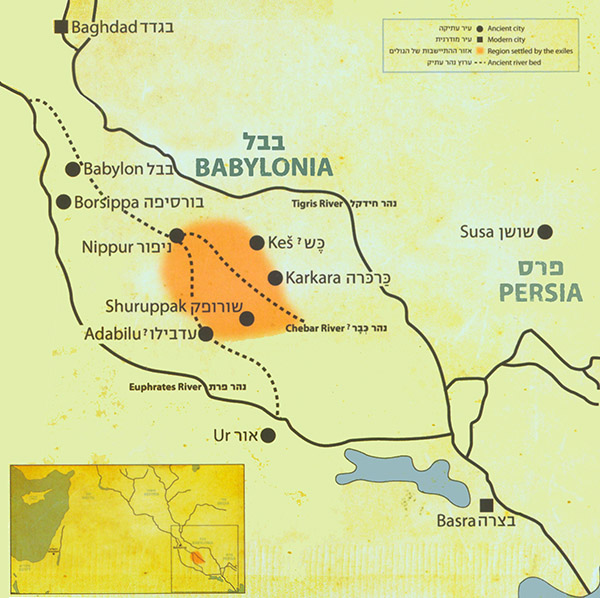
While reminiscing recently about the highlights of our archaeological careers, we could not help but include our visit to this exhibition as a stand-out experience.
We had assumed that this was only a temporary exhibition and expected it to be dismantled. We were pleasantly surprised, however, to see on their website that this exhibition is still very much on!
An animated movie in Hebrew (but with English subtitles) introduces the story of the Exile for children. We were indeed relieved to see that this unforgettable exhibition could still be enjoyed by the next generation.

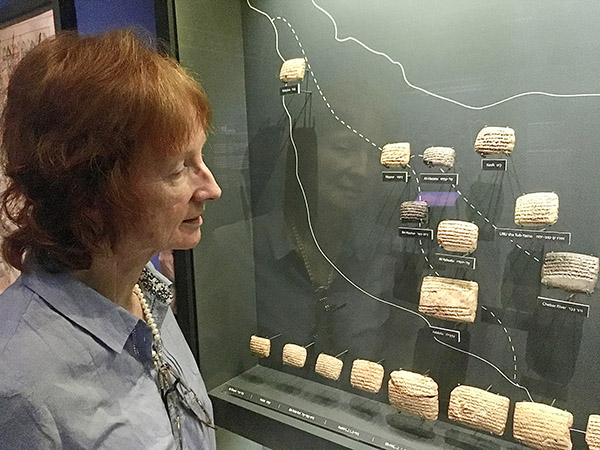
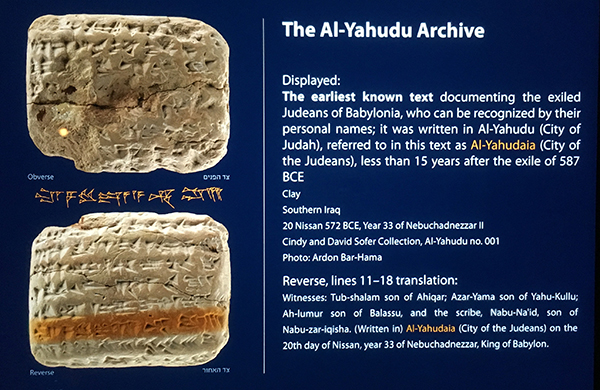
The text on some of the clay tablets that were discovered showed that the exiles lived in an area called Al-Yahuda (City of Judah) or Al-Yahudaiah (City of the Judeans), where they were initially forced to dig and dredge canals for transportation of goods as part of their obligatory service to the king and state.

Some clearly recognisable Jewish names, such as Gedaliah, Zechariah, Hananiah, Nethanyahu, Obadiah and Zedekiah, have been found on several of these tablets.
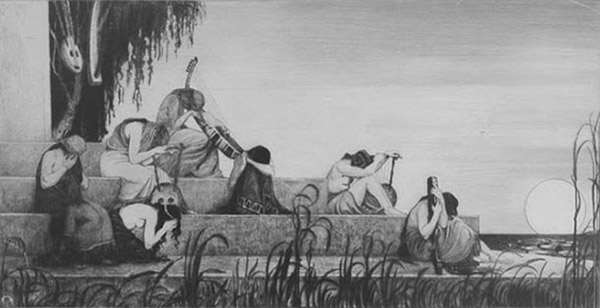
The Akkadian word for man-made canals (naru, Hebrew nahar) is one and the same for rivers. Therefore, it is possible that the words in Psalm 137:1, “By the rivers of Babylon there we sat down, yea we wept when we remembered Zion”, do not refer to the main rivers, the Euphrates and Tigris, but rather to those canals that branched out from them, which the Jewish captives were forced to dig. It was hard work, especially for a labour force that had just survived the destruction of their country and a long march from Judah to Babylon. These canals were needed to bring water for irrigation purposes and for bringing goods to inland cities, such as Babylon.
When that work was completed, the Jews were allowed to settle in the land.
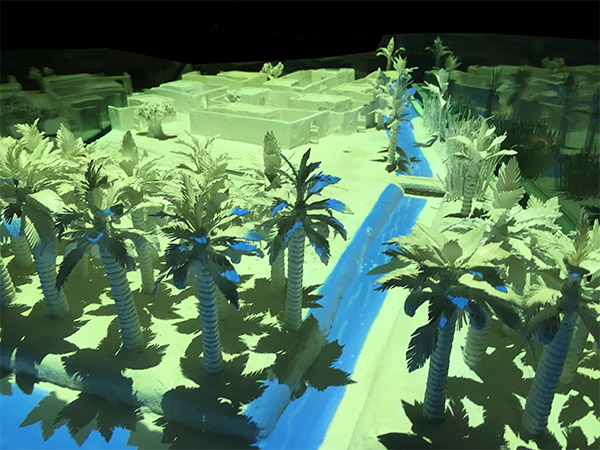
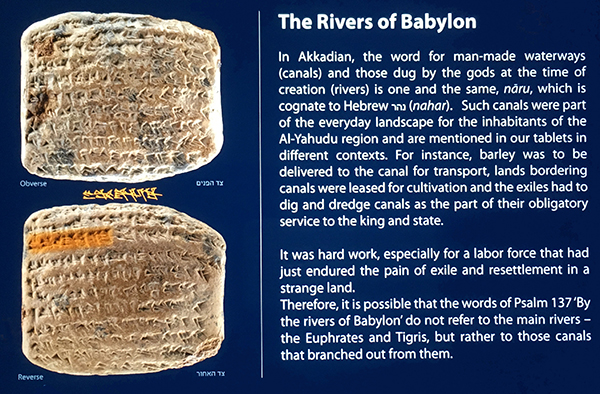
The text on these tablets also showed that after an initial hard time, the Jews quickly settled down and became prosperous. Some preferred to stay in Babylon rather than to endure the hardship of pioneering work in the province of Judea.
However, after 70 years, many exiles that had been living in Babylon since the conquest of Judah by Nebuchadnezzar, returned from Babylon to Jerusalem and Judea.
At the end of the 19th century, Jews again, after a much longer exile, returned to the Land of Israel, and many saw a historical parallel with the return of the exiles from Babylon.
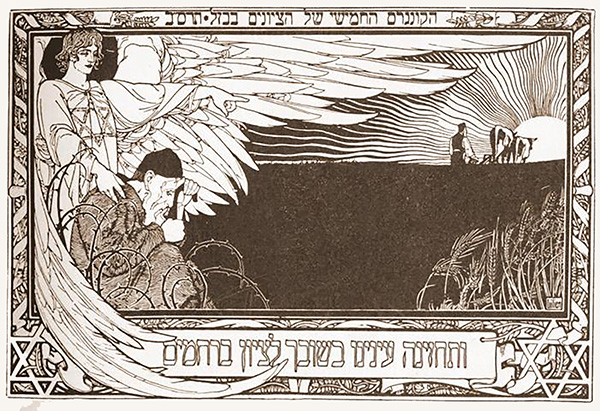
This engraving by Ephraim Moses Lilien was printed on the invitation for the 5th Zionist Congress, held in 1901, as stated in Hebrew at the top of the drawing. The pogroms in Russia and Eastern Europe at that time stimulated Jewish immigration to Palestine. This ideal has profound religious and historical roots, one of which was the return to Zion after the Babylonian exile.
The lower Hebrew inscription reads: “May our eyes behold your return in mercy to Zion.”
